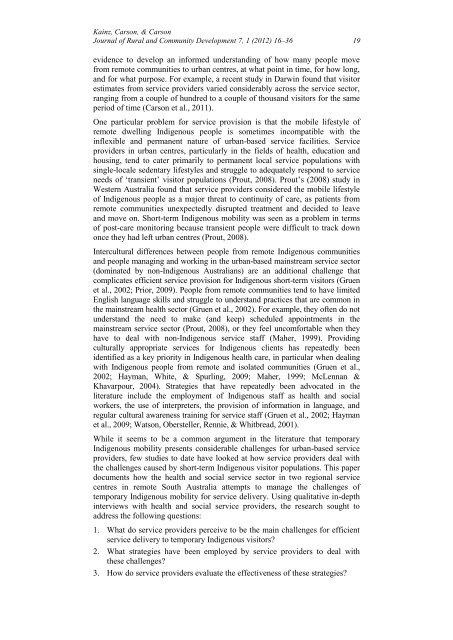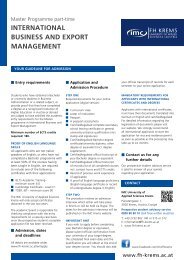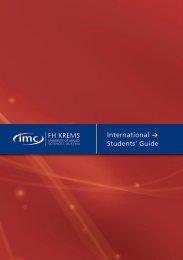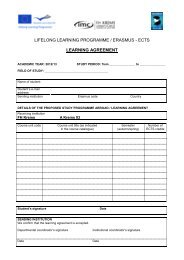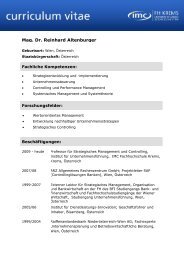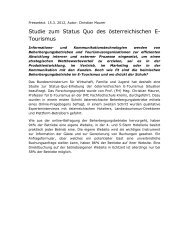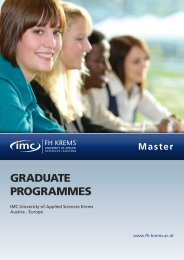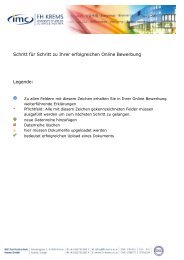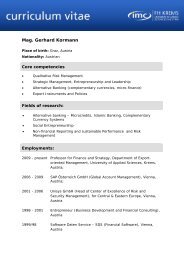Temporary Indigenous Mobility in Remote South Australia ...
Temporary Indigenous Mobility in Remote South Australia ...
Temporary Indigenous Mobility in Remote South Australia ...
Create successful ePaper yourself
Turn your PDF publications into a flip-book with our unique Google optimized e-Paper software.
Ka<strong>in</strong>z, Carson, & Carson<br />
Journal of Rural and Community Development 7, 1 (2012) 16–36 19<br />
evidence to develop an <strong>in</strong>formed understand<strong>in</strong>g of how many people move<br />
from remote communities to urban centres, at what po<strong>in</strong>t <strong>in</strong> time, for how long,<br />
and for what purpose. For example, a recent study <strong>in</strong> Darw<strong>in</strong> found that visitor<br />
estimates from service providers varied considerably across the service sector,<br />
rang<strong>in</strong>g from a couple of hundred to a couple of thousand visitors for the same<br />
period of time (Carson et al., 2011).<br />
One particular problem for service provision is that the mobile lifestyle of<br />
remote dwell<strong>in</strong>g <strong>Indigenous</strong> people is sometimes <strong>in</strong>compatible with the<br />
<strong>in</strong>flexible and permanent nature of urban-based service facilities. Service<br />
providers <strong>in</strong> urban centres, particularly <strong>in</strong> the fields of health, education and<br />
hous<strong>in</strong>g, tend to cater primarily to permanent local service populations with<br />
s<strong>in</strong>gle-locale sedentary lifestyles and struggle to adequately respond to service<br />
needs of ‘transient’ visitor populations (Prout, 2008). Prout’s (2008) study <strong>in</strong><br />
Western <strong>Australia</strong> found that service providers considered the mobile lifestyle<br />
of <strong>Indigenous</strong> people as a major threat to cont<strong>in</strong>uity of care, as patients from<br />
remote communities unexpectedly disrupted treatment and decided to leave<br />
and move on. Short-term <strong>Indigenous</strong> mobility was seen as a problem <strong>in</strong> terms<br />
of post-care monitor<strong>in</strong>g because transient people were difficult to track down<br />
once they had left urban centres (Prout, 2008).<br />
Intercultural differences between people from remote <strong>Indigenous</strong> communities<br />
and people manag<strong>in</strong>g and work<strong>in</strong>g <strong>in</strong> the urban-based ma<strong>in</strong>stream service sector<br />
(dom<strong>in</strong>ated by non-<strong>Indigenous</strong> <strong>Australia</strong>ns) are an additional challenge that<br />
complicates efficient service provision for <strong>Indigenous</strong> short-term visitors (Gruen<br />
et al., 2002; Prior, 2009). People from remote communities tend to have limited<br />
English language skills and struggle to understand practices that are common <strong>in</strong><br />
the ma<strong>in</strong>stream health sector (Gruen et al., 2002). For example, they often do not<br />
understand the need to make (and keep) scheduled appo<strong>in</strong>tments <strong>in</strong> the<br />
ma<strong>in</strong>stream service sector (Prout, 2008), or they feel uncomfortable when they<br />
have to deal with non-<strong>Indigenous</strong> service staff (Maher, 1999). Provid<strong>in</strong>g<br />
culturally appropriate services for <strong>Indigenous</strong> clients has repeatedly been<br />
identified as a key priority <strong>in</strong> <strong>Indigenous</strong> health care, <strong>in</strong> particular when deal<strong>in</strong>g<br />
with <strong>Indigenous</strong> people from remote and isolated communities (Gruen et al.,<br />
2002; Hayman, White, & Spurl<strong>in</strong>g, 2009; Maher, 1999; McLennan &<br />
Khavarpour, 2004). Strategies that have repeatedly been advocated <strong>in</strong> the<br />
literature <strong>in</strong>clude the employment of <strong>Indigenous</strong> staff as health and social<br />
workers, the use of <strong>in</strong>terpreters, the provision of <strong>in</strong>formation <strong>in</strong> language, and<br />
regular cultural awareness tra<strong>in</strong><strong>in</strong>g for service staff (Gruen et al., 2002; Hayman<br />
et al., 2009; Watson, Obersteller, Rennie, & Whitbread, 2001).<br />
While it seems to be a common argument <strong>in</strong> the literature that temporary<br />
<strong>Indigenous</strong> mobility presents considerable challenges for urban-based service<br />
providers, few studies to date have looked at how service providers deal with<br />
the challenges caused by short-term <strong>Indigenous</strong> visitor populations. This paper<br />
documents how the health and social service sector <strong>in</strong> two regional service<br />
centres <strong>in</strong> remote <strong>South</strong> <strong>Australia</strong> attempts to manage the challenges of<br />
temporary <strong>Indigenous</strong> mobility for service delivery. Us<strong>in</strong>g qualitative <strong>in</strong>-depth<br />
<strong>in</strong>terviews with health and social service providers, the research sought to<br />
address the follow<strong>in</strong>g questions:<br />
1. What do service providers perceive to be the ma<strong>in</strong> challenges for efficient<br />
service delivery to temporary <strong>Indigenous</strong> visitors?<br />
2. What strategies have been employed by service providers to deal with<br />
these challenges?<br />
3. How do service providers evaluate the effectiveness of these strategies?


